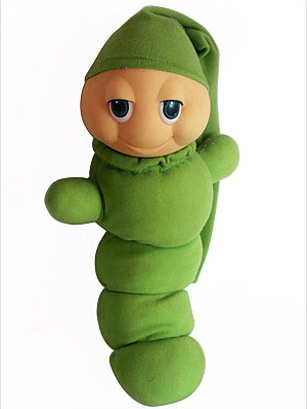“We are all worms, but I do believe I am a glow-worm”- Winston Churchill
Well, if Mr. Churchill is right, and we are all worms, I am most definitely a nematode.
Now you may be thinking, “Emily, you’ve lost it. A nematode? A toad is most definitely NOT a worm”. Don’t worry; I haven’t totally lost it (in this instance, anyways). Nematode is another name for the roundworm, which account for over 80% of the individual animals on the planet! In our lab at the University of Washington and at labs all around the world, the nematode is very close to our hearts. This is because we study one particular species of nematode called Caenorhabditis elegans. Scientific names can often be a mouthful, so most shorten it to simply C. elegans.
When I tell people that I work on worms, I usually get a look of disgust, confusion, or skepticism. But let’s get something straight- C. elegans are not what you are picturing. They don’t look like this:
Or this:
And unfortunately, they don’t look like this either:
In fact, C. elegans are very hard to see without a microscope. Adults are only about 1 millimeter long. To put that into perspective, a single C. elegans worm could be picked up by a single eyelash! Having a hard time picturing it? Here are a couple of views of C. elegans:
Ok, ok… but who in their right mind decided studying these tiny worms was a good idea?
Well, studying diseases in larger animals like mice and rats isn’t easy: they take a long time to develop and grow, are expensive to maintain, and are complicated in design. In the 1960’s, a scientist named Sydney Brenner suggested that studying C. elegans would improve on a lot of these problems: C. elegans only live for a few weeks in the lab, are cheap and easy to maintain, and it is easy to manipulate their genes! To put the simplicity of C. elegans into perspective, while the human body has trillions of cells, C. elegans only have around 1000 cells! Today, along with fruit flies, C. elegans is frequently used as a model organism for studying disease and cellular processes.
In the 40+ years that C. elegans have been used in scientific research, they have greatly contributed to the advancement of science, particularly in the study of aging. Many genes that make C. elegans live longer in the laboratory have been identified as important in the aging process in humans and other mammals. Additionally, C. elegans are a great model for studying human disease, as more than half of the genes known to be involved in human disease are also found in C. elegans. For example, models of neurodegenerative diseases including Parkinson’s and Alzheimer’s have been developed, and are currently being utilized to better understand and development treatments for these diseases.
In the last 15 years, THREE Nobel Prizes have been awarded to scientists for their work in C. elegans!
Hopefully, the next time that you hear a scientist mention that they study worms, you will not necessarily picture them digging around in the dirt and looking at earthworms. While we have all been known to dig in the dirt from time to time, C. elegans researchers are tackling tough research problems from behind a microscope, using this tractable and inexpensive model organism!
——————————————–
And now for some great references to find out more about C. elegans!
A Short History of C. elegans Research
Wormatlas: A bit dense for the nonscientist, but great images!





